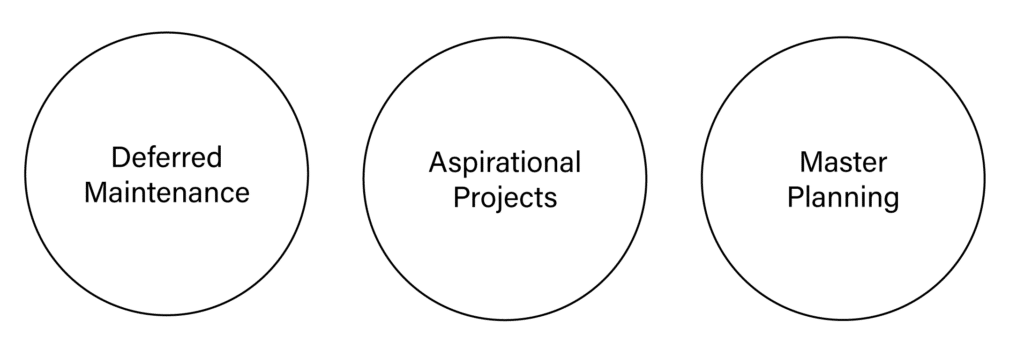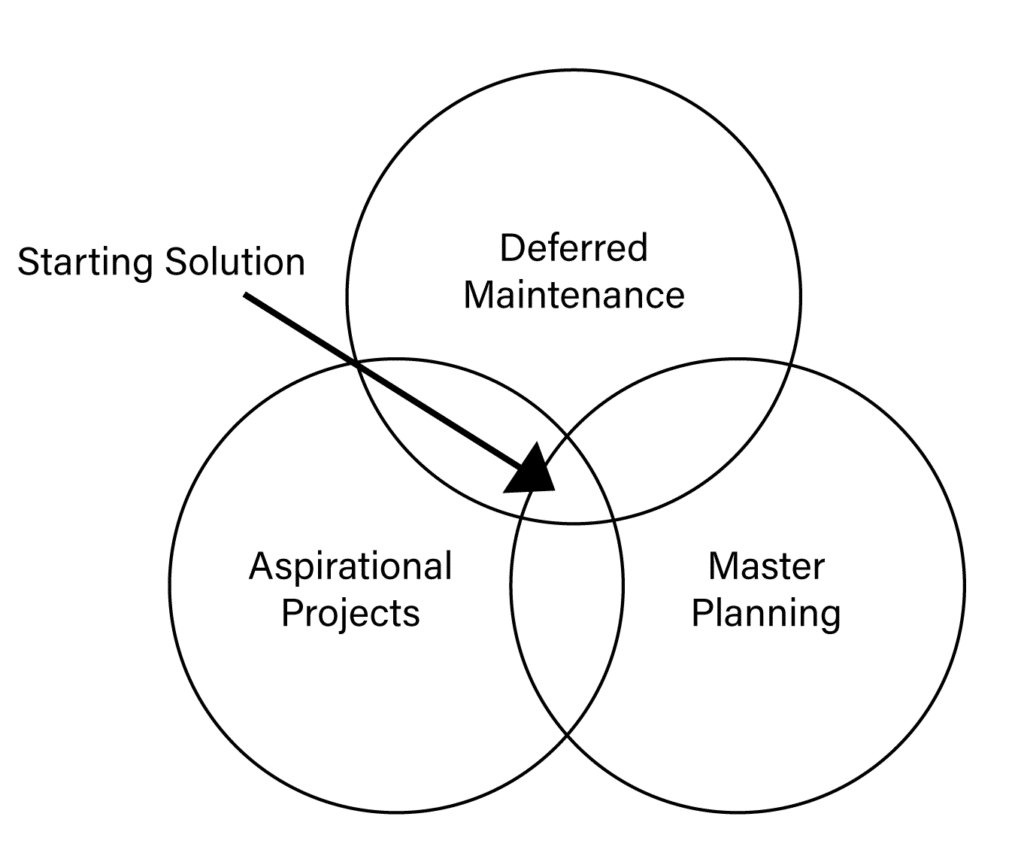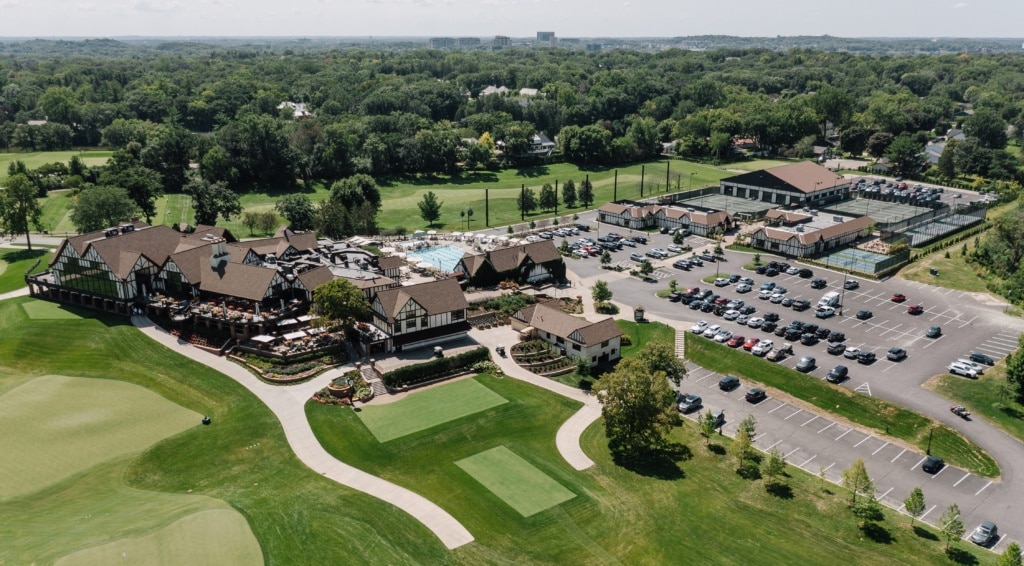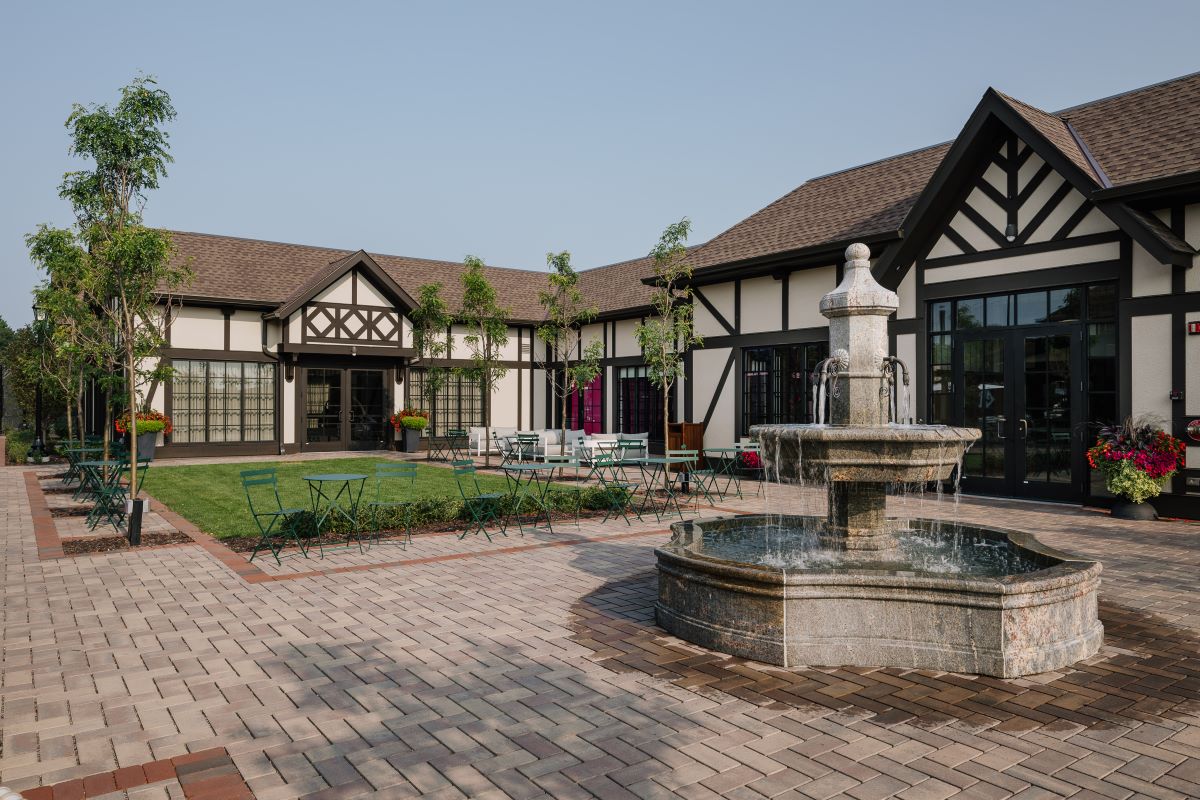The state of country clubs across the U.S. has been well documented in the media this year: The Business Journal has an ongoing country club series, including a focus on the surge of new members – and surge of member dues – brought forth by the pandemic, and The Wall Street Journal recently chronicled the rise of millennials seeking the country club lifestyle.
It’s clear that country clubs are evolving, and no one understands the current state of country clubs better than their General Managers in the heart of the storm daily. Noting their club’s changing state and equipped with an influx of capital, those General Managers are eager to invest in club improvement projects. And while every club leader has a list of things they want to get done and another list of things that need to get done, it can be difficult knowing where to start, with solutions typically falling into one of three categories: deferred maintenance, aspirational projects or master planning.

Deferred maintenance is essential; it needs to be done to maintain infrastructure and the general state of the club. It’s often delayed because it’s hard to show immediate value – members usually don’t notice fresh paint or new shingles, but maintenance is essential to keep the campus functional and avoid degradation that could majorly decline the value and perception of the club. And once a club is in a state like that, it is a daunting task to restore the infrastructure.
Aspirational Projects improve the member experience and can build a competitive edge in the market. They can add immediate value, but they are elective projects, not essential. Aspirational projects could be as simple as adding a pickleball court or as big as a full clubhouse renovation. Done correctly, they’ll satisfy current members and have the potential to draw in new ones.
Master planning takes the campus improvements and enhancements even further, putting longer term aspirational and financial goals to them. Master planning considers the pickleball aspirational project for example, but further processes how it fits into their members’ lifestyle long-term, if the court could be flexed for other uses and if they could create a revenue stream from the programming. Master planning is future planning, it’s strategically setting the club up for growth and flexibility for years to come.
Finding the Sweet Spot
So, where should a General Manager start?
The answer is there is no one-size-fits-all-clubs solution or set order to check off each category. The issues faced by many clubs are similar, although each club and members are unique.
Through partnering with various clubs and their leadership, we’ve found that the sweet spot is right in the middle of it all – it’s the solution that satisfies the major goals of all three categories: essential maintenance is tackled, member experience is enhanced and the club is strategically set up for a future of financial growth.

It’s in this intersection of the three categories where you’ll find the balance between creating a successful member experience and running a successful business long-term.
Taking the Risk
With implementing the solution comes risk. As clubs move forward and progress, it’s human nature for long-term members to resist the changes that many new members (and potential members) want to support their lifestyles.
For example, a recent analysis by Placer.ai shows that younger demographics are taking on a new interest in country clubs. These new millennial members are seeking clubs with relaxed dress-codes and spaces, family-friendly focused programming and networking opportunities. And the Business Journal reports this is creating a generational divide at some clubs.
This can leave club management with difficult choices on what changes and updates make the most sense for the future, as well as their return on investment. And importantly, they will have to decide if they are ready to face possible attrition. Hopefully the answer is yes, because while existing members who have invested into the club and its history are absolutely a priority, leaders have to find the delicate balance in change that also draws in new members and aspirational capital.
Interlachen Country Club: A Successful Case History
Consider Interlachen Country Club’s recent $30 million capital project. Shea partnered with their team on a solution that touched all three categories of deferred maintenance, aspirational projects and master planning, a solution that included full renovations of existing spaces and ground-up architecture and interior design of three buildings on their new West Campus.

Simply put: the project was a success due to the smart, strategic decisions driven by their CEO/General Manager Joel Livingood, Assistant General Manager Carrie Eyler and incredible team of leaders, all highlighted by a healthy dose of risk. Strategy was key on both sides of the partnership, but none of it would have been possible without Interlachen taking the leap. It wasn’t always easy, and members weren’t always on board.
“All throughout the project, we talked about this being not so much for the member of today, but for the member of tomorrow,” Joel told the Business Journal. “We’ve seen members of all generations using and enjoying the club in ways they hadn’t before, and overall it’s been a resounding success.”
And it’s not just the positive member experience that’s proved successful. Interlachen’s balanced perspectives proved successful financially as well: the Business Journal just named Interlachen Country Club the most asset-rich country club in Minnesota. The investment also added returns of a growing waitlist and new revenue streams for the club – for example, new dining at The Lodge and Founders Restaurant, as well as new retail at The Fieldhouse.

The Lodge

Founders Restaurant

The Fieldhouse
As stated previously, there is no one-size-fits-all-clubs solution for tackling a club improvement project. But to find a successful return, like Interlachen, it starts with determining your wants and needs list and finding that sweet spot solution that satisfies the top goals. And if you’re still not sure where to start, we can help.



